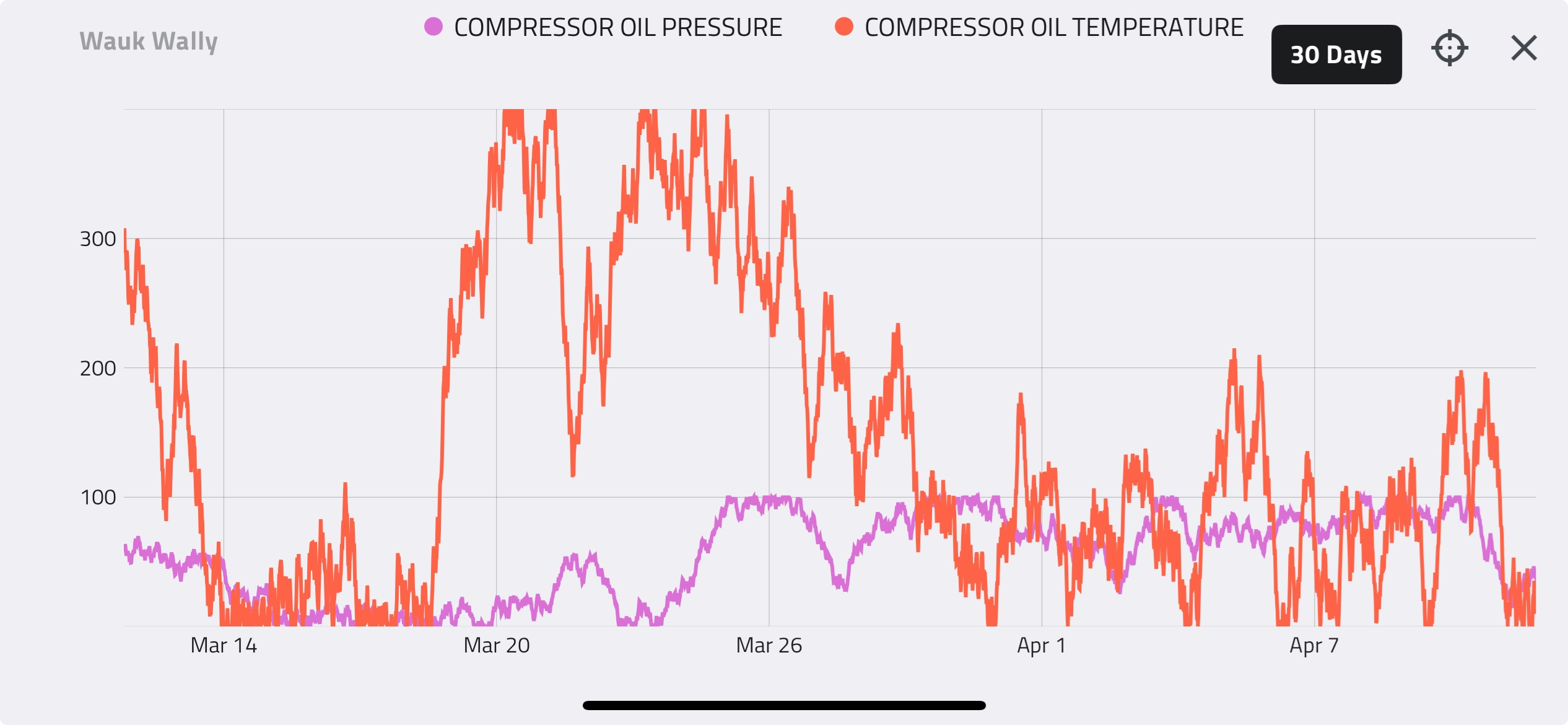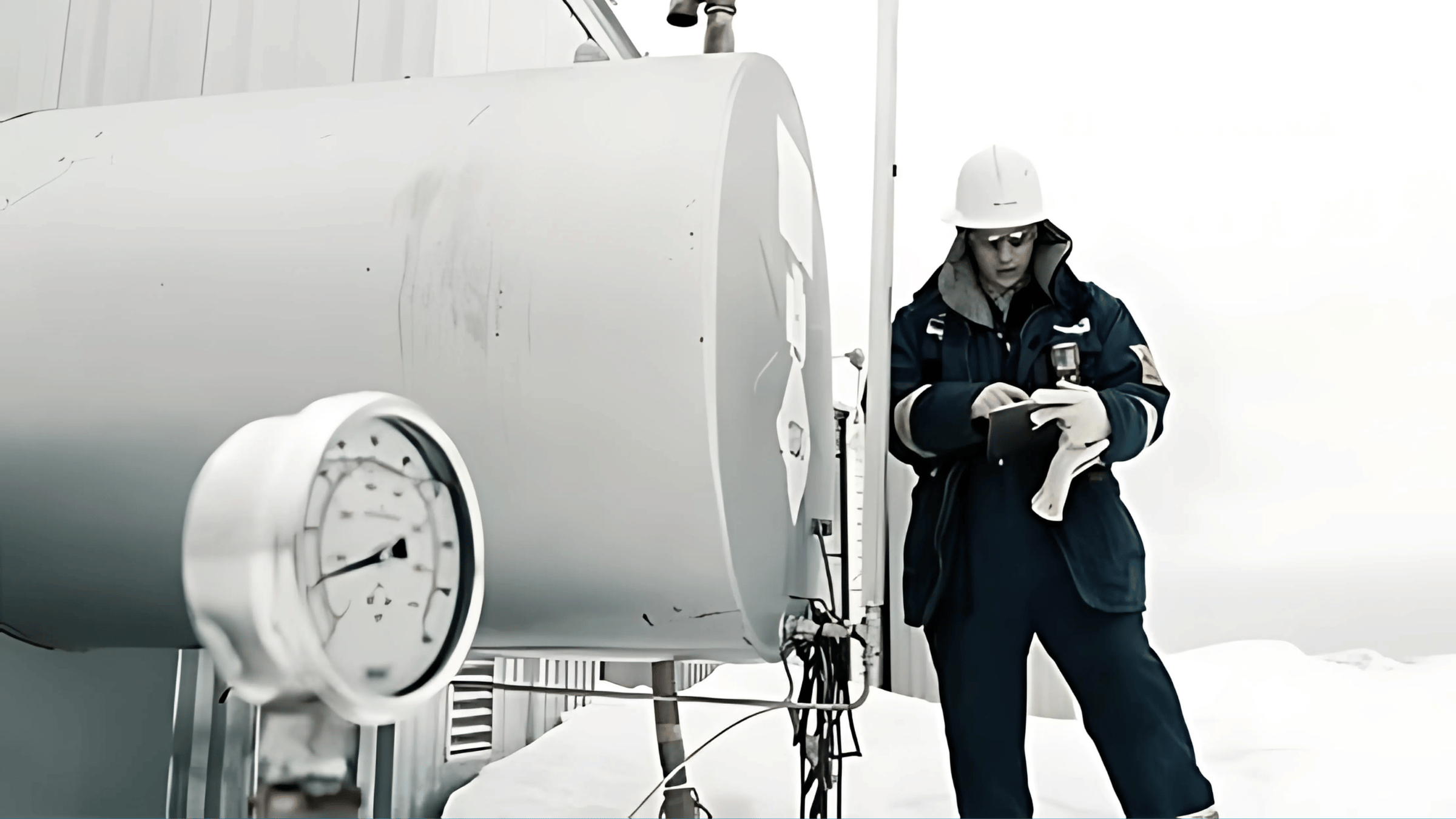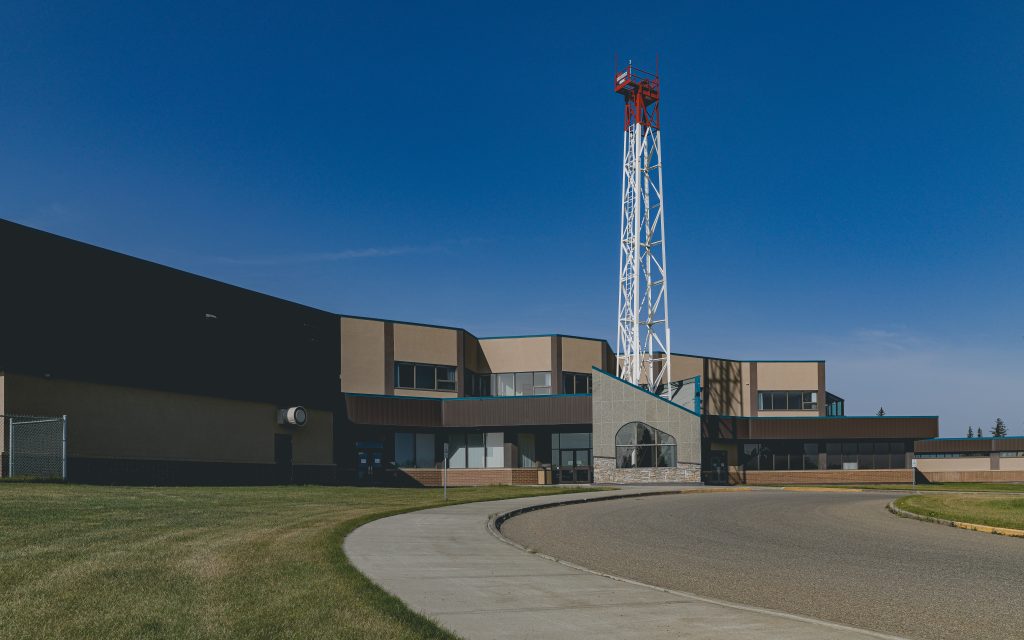Houston, TX | June 3, 2024
Natural gas compressors are the unsung workhorses of oil and gas operations, keeping gas moving from wellheads through pipelines to end users. In upstream production, compressors lift gas from wells and boost it into gathering lines. In midstream pipelines, large compressor stations maintain pressure to push gas across long distances. Even downstream, compressors play a role in processing plants and distribution networks. This article provides a casual but informative look at the main types of natural gas compressors – reciprocating, rotary screw, and centrifugal – explaining how each works and where each excels (upstream, midstream, downstream). We’ll also share best practices to optimize compressor performance for higher production, energy savings, reliability, and lower emissions, drawing on the latest industry insights.
Reciprocating Compressors (Piston Compressors)
Working Principle: Reciprocating compressors use a crankshaft-driven piston moving back and forth in a cylinder to compress gas. On each stroke, gas is drawn into the cylinder and then squeezed into a smaller volume, increasing its pressure. Multi-stage designs (with several cylinders in series) are common to achieve higher pressures in steps.
Best Uses: Reciprocating compressors are widely used across upstream and midstream operations, especially when high pressure is needed at relatively low to moderate flow rates. They are common at wellhead facilities and gas gathering systems (upstream) for boosting gas from low well pressure up to pipeline pressure. They also handle gas storage injection and pipeline booster service in midstream, particularly for smaller pipelines or when very high discharge pressures are required. In downstream or processing contexts, reciprocating units might compress gas for petrochemical processes or CNG fueling, where flow requirements are not extremely large but pressure is critical.
Pros: The big advantage of reciprocating compressors is their ability to achieve high pressure ratios and handle varying conditions. They can reach higher pressure differentials than a single centrifugal stage and perform well over a wide range of flow rates. This makes them very flexible – operators can adjust cylinder unloaders or add stages to adapt to changing well production or pipeline needs. Reciprocating units also often have a lower initial cost for small-to-medium sizes compared to large centrifugal machines.
Cons: The trade-off is that piston compressors have many moving parts (pistons, valves, rods) that wear over time. They require frequent maintenance (valve replacements, piston ring checks, etc.) and tend to be less reliable if not well-maintained. The back-and-forth motion produces a pulsating flow that can cause vibration and noise, so pulsation dampeners and robust foundations are needed. These factors lead to higher long-term operating costs and downtime for repairs. Recips are also physically large and heavy for the amount of gas they handle (bulky frames and cylinders), so space and weight can be an issue in some installations.
Rotary Screw Compressors
Working Principle: Rotary screw compressors compress gas using two intermeshed helical rotors (screws) turning within a casing. As the screws rotate, they trap gas in cavities between the lobes and the casing, continuously sweeping the trapped gas toward the discharge end and shrinking the volume to raise pressure. Oil is often injected to cool and seal the rotors (in oil-flooded screw compressors), which improves efficiency and carries away heat.

Best Uses: Screw compressors are ideal for continuous, steady gas flows at moderate pressures. They shine in upstream applications like gas gathering systems, vapor recovery units (VRUs), and wellhead compression where suction pressures are low and large volumes of gas need to be boosted. For example, a rotary screw VRU can capture low-pressure hydrocarbon vapors from oil tanks and compress them to a higher pressure for processing or pipeline injection. Screws are also used for fuel gas boosting (supplying gas at the right pressure to engines or turbines) and in some midstream facilities handling wet or dirty gas. They generally operate up to medium discharge pressures (a single stage might raise pressure by up to 20:1 ratio).
Pros: The rotary screw design provides a smooth, pulse-free flow of gas. With few moving parts and no valves, screw compressors are known for high reliability and lower maintenance requirements. They can run 24/7 with a near-100% duty cycle, which is perfect for continuous operation in the field. Screw units are compact for the volume they handle and can often be skid-mounted for easy transport and installation. They also handle small amounts of liquids in the gas stream better than reciprocating compressors (which can be damaged by liquid slugs) – the oil-flooded screw naturally tolerates and separates out liquids. In high-BTU or wet gas service, their durability and steady operation are big pluses for operators.
Cons: The main limitation of screw compressors is their discharge pressure capability. Operation beyond 300 psig (2070kPag) discharge pressure for a single-stage screw aren't typically possible. In practice, many field operations use a screw for the first stage of compression and then a reciprocating unit to reach final pipeline pressure. Another consideration is efficiency: rotary screws are most efficient around their design point. If a screw compressor is significantly under-compressing or over-compressing the gas (compression ratio mismatched to the system), it can waste energy as heat. To mitigate this, modern screw packages often include variable Vi (internal volume ratio) control or slide valves to adjust the compression process to match demand. Overall, screws are not typically used for very small flows (a reciprocating might be simpler then) or ultra-high pressures (better handled by recips or centrifugal machines).
Centrifugal Compressors (Turbo Compressors)
Working Principle: Centrifugal compressors are dynamic compressors that raise gas pressure by imparting kinetic energy. A high-speed rotating impeller accelerates the natural gas outward – as the gas exits the impeller into a diffuser, the velocity energy is converted into pressure. In essence, they “throw” the gas outward at high speed to compress it. Centrifugal compressors usually have multiple impeller stages in one casing (or multiple casings in series) to achieve the desired final pressure.
Best Uses: Centrifugal compressors are the go-to choice for high flow rate, continuous service in midstream and downstream operations. They are commonly found in pipeline compressor stations on major transmission lines, moving massive volumes of gas across long distances. For instance, a single centrifugal machine (driven by a gas turbine or electric motor) can handle hundreds of millions of cubic feet per day of gas flow. They are also used in gas processing plants, LNG liquefaction trains, and other large-scale facilities where a lot of gas must be compressed but the pressure increase per stage is relatively moderate. In upstream, pure centrifugal compressors are less common at individual well sites (flows are usually too low to justify them), but large central processing facilities might use centrifugals if the combined flow from many wells is high and stable.
Pros: The strength of centrifugal compressors is their ability to move very large volumes of gas efficiently. They are compact relative to their throughput – instead of many cylinders or screws, one centrifugal machine with multiple stages can often do the work of several smaller units. They also have low vibration and noise levels (no pulsations, since compression is continuous), which simplifies installation and reduces wear. Maintenance requirements are generally lower than for reciprocating compressors because there are no cyclical high-stress moving parts like pistons; as long as the bearings, seals, and impellers are kept in good shape, they can run for long intervals. Centrifugal units excel at high-speed, continuous operation under steady conditions, and modern designs can be very efficient near their design capacity.
Cons: A key challenge with centrifugal compressors is their narrow operating range compared to positive displacement machines. They have a phenomenon called surge – if flow drops below a certain limit, the compressor can become unstable. Thus, centrifugals are less suited to highly variable flow demands; they often require anti-surge recycle valves to maintain a minimum flow or use variable speed drives/inlet guide vanes to adjust capacity. Each centrifugal stage provides a limited pressure boost (pressure ratio per stage might be ~1.2 to 1.8), so achieving high pressures means adding multiple stages in series. This adds complexity and cost, especially for very high-pressure requirements where reciprocating compressors might achieve the same in fewer stages. Finally, the upfront cost of centrifugal compressors and their drivers tends to be high. They are high-tech machines (many are driven by gas turbines) and require precise engineering, so the capital investment is significant – justified mainly when the throughput is large enough to warrant it.
Comparison of Compressor Types
To summarize the differences, below is a simple comparison of reciprocating, rotary screw, and centrifugal compressors commonly used in natural gas service:
| Compressor Type | Working Principle | Best Use Case | Pros | Cons |
|---|---|---|---|---|
| Reciprocating | Piston moves back-and-forth in cylinders to compress gas (positive displacement) | High pressure, low-to-mid flow applications (e.g. wellhead boost, gas injection, small pipeline stations) | - Achieves high pressure ratios - Flexible operation over wide flow range |
- Frequent maintenance needed - Pulsating flow (needs dampeners) |
| Rotary Screw | Two intermeshing helical rotors continuously trap and compress gas (positive displacement) | Low pressure, low-to-mid flow applications (e.g. gas gathering systems, vapor recovery units, fuel gas boosting) | - Continuous, smooth gas flow - Low maintenance & high reliability (few moving parts) |
- Low discharge pressure - Lower efficiency if operated off-design (part-load) |
| Centrifugal | High-speed impeller imparts velocity to gas, converted to pressure in diffuser (dynamic compressor) | High flow, steady demand applications (e.g. large pipeline compressor stations, LNG or gas processing plants) | - Very high flow capacity per unit - Smooth operation with low vibration |
- Narrow operating range (risk of surge at low flow) - High initial cost and complexity |
(Upstream operations tend to favor reciprocating and screw compressors for their flexibility at well sites, while midstream and large downstream facilities favor centrifugal compressors for bulk gas transport.)
Optimizing Compressor Performance (Boosting Production & Efficiency)
Choosing the right type of compressor is only half the battle – operating and maintaining compressors optimally is key to improving production, reducing energy costs, increasing reliability, and minimizing emissions. Here are some best practices in each of these areas:
-
Improving Production: An optimized compressor setup ensures gas flows aren’t bottlenecked. Check for signs of underperformance, such as compressors running far below capacity or suction control valves partially closed and choking flow – these indicate that compression might be holding back throughput. Addressing such bottlenecks (for example, by adjusting compressor setpoints or adding compression stages) can immediately increase gas production output. Implementing real-time monitoring of compressor parameters helps catch issues in time; for instance, if a well’s gas output rises, the compressor’s settings can be tuned promptly to handle the extra volume. Also, avoid reactive maintenance that causes surprise downtime – predictive maintenance programs keep compressors running so they don’t shut in your wells unexpectedly. In short, well-maintained compressors running at optimal settings will maximize throughput and help meet production targets consistently.
-
Reducing Energy Costs: Compression is energy-intensive – in fact, compressors can account for up to ~50% of the energy consumption in gas operations. To cut operating costs, focus on compressor efficiency. One common inefficiency is gas recycling or bypassing: if a compressor is compressing more gas than needed and dumping excess back (or throttling it), it’s wasting power. Eliminating unnecessary bypass (by right-sizing compressors and adjusting control setpoints) can yield huge energy savings. Keep an eye on pressure drops across coolers and filters – a clogged cooler causing high interstage pressure drop means the compressor works harder for the same output. Likewise, fix issues like cylinder valve leaks or blow-by in reciprocating compressors that force the machine to recompress gas repeatedly. Regular preventive maintenance (cleaning heat exchangers, changing filters, replacing worn seals) maintains efficiency so the compressor doesn’t guzzle extra fuel. Many companies are now using energy analytics to track compressor performance and have achieved 10–20% reductions in energy costs by implementing such optimization measures – which goes straight to the bottom line in fuel or electricity savings.

-
Increasing Reliability: Unplanned compressor outages can bring gas operations to a halt, leading to lost production and costly emergency repairs. To enhance reliability, move from firefighting to proactive maintenance. Start by tracking reliability metrics like runtime percentage, mean time between failures (MTBF), and the ratio of unplanned vs. planned downtime. If a compressor’s uptime is low or it’s experiencing frequent unplanned shutdowns, investigate the root causes (common culprits are valve failures in recips, motor overloads, inadequate lubrication, etc.). Deploying condition monitoring sensors on critical components – for example, vibration sensors on bearings, temperature probes on discharge outlets – allows early detection of problems before they escalate. Many modern compressor systems use IIoT platforms to predict failures (e.g. detecting a vibration pattern that precedes a bearing failure) so maintenance can be scheduled at a convenient time rather than after a breakdown. Also, consider usage-based maintenance scheduling: instead of servicing equipment strictly by the calendar, base it on actual run-hours and performance data. By performing timely overhauls and component replacements as needed, you prevent catastrophic failures. The result is compressors that run longer between overhauls, with higher uptime and reliability to keep gas flowing without interruption.
-
Minimizing Emissions: Environmental regulations are increasingly stringent on natural gas operations, targeting methane leaks and combustion emissions. Compressors can be a source of fugitive emissions (through seals and connections) and engine exhaust if they’re driven by gas engines. Leak detection and repair (LDAR) programs are crucial – use infrared cameras or gas sniffers to regularly scan compressor stations for gas leaks and fix them promptly. Even a small gasket leak or packing vent can add up to significant methane losses (and lost product). Ensuring efficient combustion in engine-driven compressors is another lever. This might involve tuning the air-fuel ratio on gas engine drivers or opting for electric motor drives where feasible to eliminate on-site combustion emissions. Many operators are installing continuous emissions monitoring systems on large compressors to track methane and NOx/CO₂ output in real time – this helps in catching issues like an engine running rich (high emissions) or identifying trends so you can take corrective action and stay in compliance. Finally, there is a strong link between energy efficiency and emissions: any steps that improve compressor efficiency (reducing fuel consumption or power use) will also cut greenhouse gas emissions proportionally. In other words, a compressor that uses 10% less energy will also produce about 10% less CO₂. By optimizing maintenance and operations as described above, you not only save money but also shrink the environmental footprint of your compressor fleet.
Conclusion: Natural gas compressors are critical assets in production and midstream operations, and understanding the differences between reciprocating, rotary screw, and centrifugal compressors helps in selecting the right tool for the job. Reciprocating (piston) compressors offer high pressure and flexibility, screws provide reliable continuous service for moderate pressures, and centrifugal units handle the heavy lifting of bulk gas transport. By applying modern best practices – from real-time monitoring to predictive maintenance and energy management – engineers and operations managers can optimize compressor performance to boost output, cut costs, improve reliability, and meet emissions targets. In an industry where uptime, efficiency, and sustainability are paramount, taking a proactive approach to compressor management turns these machines into true enablers of success. With the right compressor strategy and care, you’ll keep the gas moving smoothly and profitably all the way from the wellhead to the burner tip.



